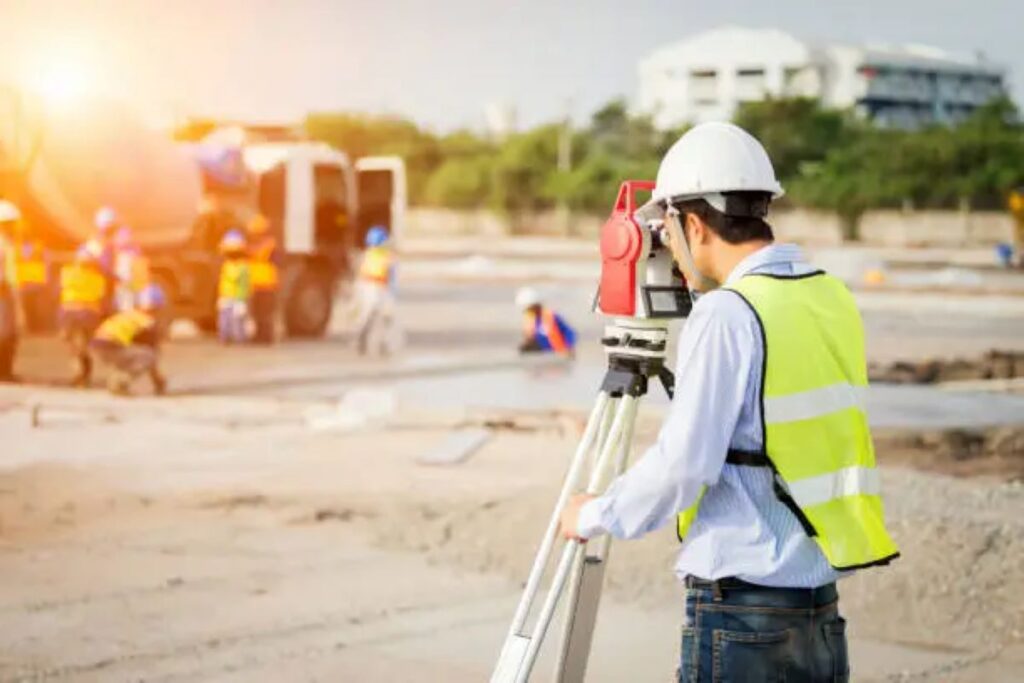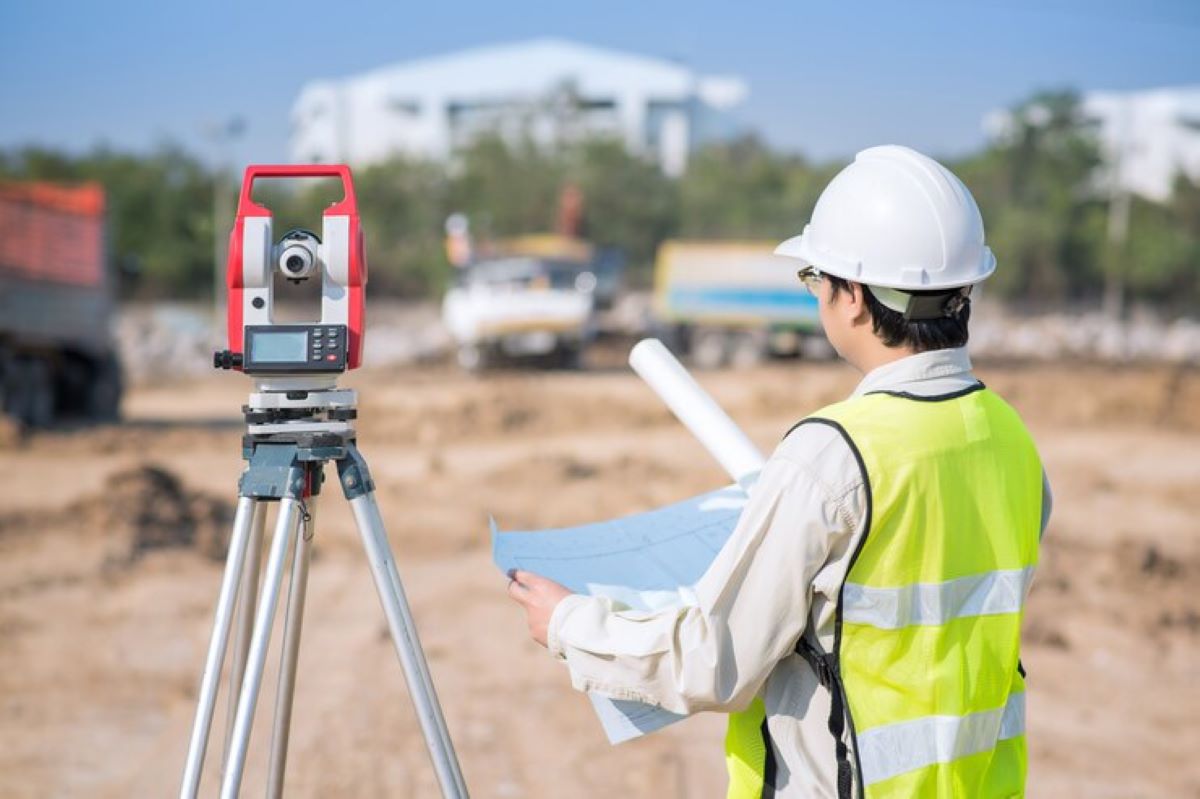In the realm of large-scale developments, the role of a survey engineer is pivotal. These professionals are the backbone of any construction project, ensuring that every aspect of the development is accurately measured, mapped, and executed. From the initial stages of planning to the final touches of construction, survey engineers play a crucial role in delivering projects that are both functional and compliant with regulatory standards.
The Importance of Survey Engineering
Survey engineering is not merely about measuring land; it encompasses a wide range of activities that are essential for the successful completion of any large development. These activities include land surveying, construction staking, and the creation of topographic maps, all of which provide the necessary data to inform design and construction decisions.
Data Collection and Analysis
One of the primary responsibilities of a survey engineer is to collect accurate data regarding the land and its features. This involves using advanced surveying equipment such as total stations, GPS, and laser scanners to gather precise measurements. The data collected is then analysed to create detailed maps and models that inform the project’s design.
In large developments, the scale of data collection can be immense. Survey engineers must ensure that the data is not only accurate but also relevant to the specific needs of the project. This requires a keen understanding of both the technical aspects of surveying and the broader context of the development. Moreover, as technology evolves, survey engineers are increasingly adopting software tools that enable them to visualise data in three dimensions, providing stakeholders with a clearer understanding of the terrain and its potential challenges. This visualisation plays a crucial role in facilitating discussions among architects, engineers, and clients, ensuring that everyone is aligned on the project goals.
Compliance and Regulatory Standards
Another critical aspect of a survey engineer’s role is ensuring compliance with local regulations and standards. This includes understanding zoning laws, environmental regulations, and construction codes. Survey engineers must be well-versed in these regulations to ensure that the project adheres to legal requirements, thereby avoiding potential delays or legal issues.
Failure to comply with these standards can result in significant setbacks for a development project, including costly fines or the need for redesigns. As such, survey engineers act as a vital link between the project team and regulatory bodies, facilitating communication and ensuring that all necessary permits are obtained. Additionally, they often engage in public consultations, where they present findings and address community concerns, thereby fostering transparency and trust. This interaction not only enhances the project’s credibility but also helps in identifying potential issues early on, which can save time and resources in the long run. Understanding the community’s perspective is essential, as it can lead to modifications that improve the project’s acceptance and sustainability within the local environment.
On-Site Responsibilities
When it comes to large developments, the role of a survey engineer extends beyond data collection and compliance. On-site responsibilities are equally significant, as these engineers are often the first point of contact for any issues related to land and measurements during construction.
Construction Staking
One of the most important on-site tasks for survey engineers is construction staking. This process involves marking out the locations of structures, utilities, and other key elements of the project according to the design plans. Accurate staking is essential to ensure that construction proceeds as intended and that all elements are correctly positioned.
Survey engineers use their expertise to translate the design plans into physical markers on the ground. This requires not only technical skills but also a thorough understanding of the project’s design and the ability to communicate effectively with construction teams.
Monitoring and Quality Control
As construction progresses, survey engineers are responsible for ongoing monitoring and quality control. This involves regularly checking measurements and ensuring that the construction aligns with the approved plans. Any discrepancies must be addressed promptly to avoid complications later in the project.
By maintaining a close watch on the construction process, survey engineers can identify potential issues early on, allowing for timely interventions. This proactive approach helps to keep the project on schedule and within budget, ultimately contributing to its success.
Collaboration with Other Professionals
Survey engineers do not work in isolation; they are integral members of a larger project team that includes architects, civil engineers, and construction managers. Effective collaboration is essential for ensuring that all aspects of the project are aligned and that everyone is working towards the same goals.
Communication with Stakeholders
Clear communication is vital in large developments, where multiple stakeholders are involved. Survey engineers must be able to convey complex technical information in a manner that is understandable to non-technical team members. This includes providing updates on survey findings, discussing potential issues, and collaborating on solutions.
By fostering open lines of communication, survey engineers help to build trust among team members and ensure that everyone is informed about the project’s progress. This collaborative spirit is essential for navigating the challenges that often arise during large developments.

Interdisciplinary Coordination
Large developments often require input from various disciplines, including environmental science, urban planning, and civil engineering. Survey engineers play a key role in coordinating these efforts, ensuring that all disciplines work together harmoniously.
This interdisciplinary approach not only enhances the quality of the project but also promotes innovative solutions to complex challenges. By integrating diverse perspectives, survey engineers can contribute to more sustainable and efficient development practices.
Technological Advancements in Survey Engineering
The field of survey engineering is continually evolving, with new technologies transforming the way surveyors work. From drones to advanced software, these tools are enhancing the accuracy and efficiency of surveying processes.
Use of Drones
Drones have become increasingly popular in survey engineering, offering a cost-effective and efficient means of collecting data over large areas. Equipped with high-resolution cameras and LiDAR technology, drones can capture detailed images and topographical data that would be time-consuming and labour-intensive to gather on foot.
The use of drones not only speeds up the data collection process but also provides a safer alternative, reducing the need for survey engineers to work in potentially hazardous environments. This technological advancement is revolutionising the surveying industry, allowing for more comprehensive analyses and informed decision-making.
Advanced Software Solutions
In addition to drones, advanced software solutions are playing a crucial role in survey engineering. Software applications can process and analyse large datasets, creating detailed models and visualisations that aid in project planning and execution.
These tools enable survey engineers to simulate various scenarios, assess potential challenges, and optimise designs before construction begins. By leveraging technology, survey engineers can enhance their productivity and deliver higher-quality results for large developments. Check out more about How to Select the Right Engineer Surveyor for Your Project.
Challenges Faced by Survey Engineers
While the role of a survey engineer is vital, it is not without its challenges. Large developments often present unique obstacles that require innovative solutions and adaptability.
Environmental Considerations
Survey engineers must navigate a range of environmental considerations, particularly in areas with sensitive ecosystems. This may involve conducting environmental impact assessments and ensuring that the project complies with regulations aimed at protecting natural resources.
Balancing development needs with environmental stewardship can be a complex task, requiring survey engineers to work closely with environmental specialists and regulatory agencies. This collaborative approach is essential for minimising the ecological footprint of large developments.
Adapting to Changing Conditions
Construction sites are dynamic environments where conditions can change rapidly. Weather, unforeseen site conditions, and design modifications can all impact the surveying process. Survey engineers must be prepared to adapt to these changes and adjust their plans accordingly.
This flexibility is crucial for maintaining project timelines and ensuring that all aspects of the development are executed smoothly. By staying agile and responsive, survey engineers can effectively manage the challenges that arise during large developments.

Conclusion
The role of a survey engineer on-site during large developments is multifaceted and essential for the successful completion of projects. From data collection and compliance to collaboration and technological innovation, survey engineers contribute significantly to the overall success of construction initiatives.
As the industry continues to evolve, the importance of survey engineers will only grow. Their expertise not only ensures that developments are built to the highest standards but also plays a critical role in promoting sustainable practices and effective project management.
In an era where large developments are increasingly complex, the survey engineer stands as a vital figure, bridging the gap between planning and execution, and ensuring that every project is a success.


Leave a Reply